Recently Tom and I visited the Catawba Nation Cultural Center in Rock Hill, South Carolina. We were hoping to get some information that we could use in one of the displays we have been working on.
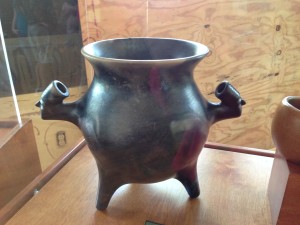
The Catawba Nation Cultural Center is an interesting mix of things. It is partly a museum with some displays of Catawban pottery. Catawban pottery is different because it is not fired in a kiln: instead, it is gradually hardened next to the fire and then in a fire pit. This gives it an interesting “charred” appearance. There was also a display of a Catawban suuk – a round house made out of saplings and tree bark. Along a hallway was a large mural that told the story of the Catawban people.
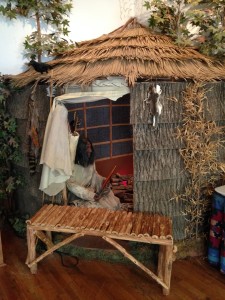
The Catawba (also called Iswa – people of the river) are the people indigenous to this area of South and North Carolina. They were driven out of the north by the Iroquois and settled along the Catawba and Wateree Rivers around 1550. After several wars with the Cherokee, the Broad River was established as a boundary between the lands of the two nations. The Catawba are primarily an agricultural people who established towns along the rivers and lived peacefully with the earliest European-American settlers.
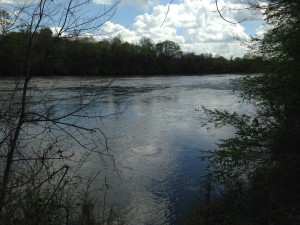
Several smallpox epidemics decimated the tribe, and by 1759 there were fewer than 1,000 of them left on the land. With the Treaty of Paris in 1763, which established the boundaries of the colonies and the “Indian lands,” the Catawba were granted a reservation of 15 square miles in York and Lancaster Counties of South Carolina. The Catawba were allies of the Patriots during the Revolutionary War and have lived on their ancestral land since then.
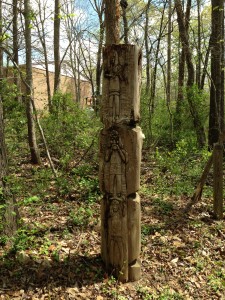
The Catawba Reservation today borders the Catawba River. There is a hiking trail with some plaques that describe history and mythology of the Catawba. On our walk to the river we saw something like totem poles. These are “Yehasuri”: mischievous spirits about two feet tall that live in the forest and annoy children and shoot arrows at unkind adults.
The Catawba Nation Cultural Center also had a large gathering room with a communal drum where tribal meetings are held. There was a small gift shop that had generic Indian stuff – mostly Navaho dolls and books about the Cherokee. We were disappointed that there weren’t crafts that were distinctly Catawban.
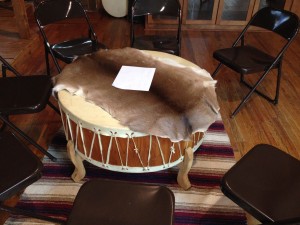
We had an interesting visit to the Catawba Nation Cultural Center. It is definitely worth a visit if you are in the area around Charlotte.

2 comments